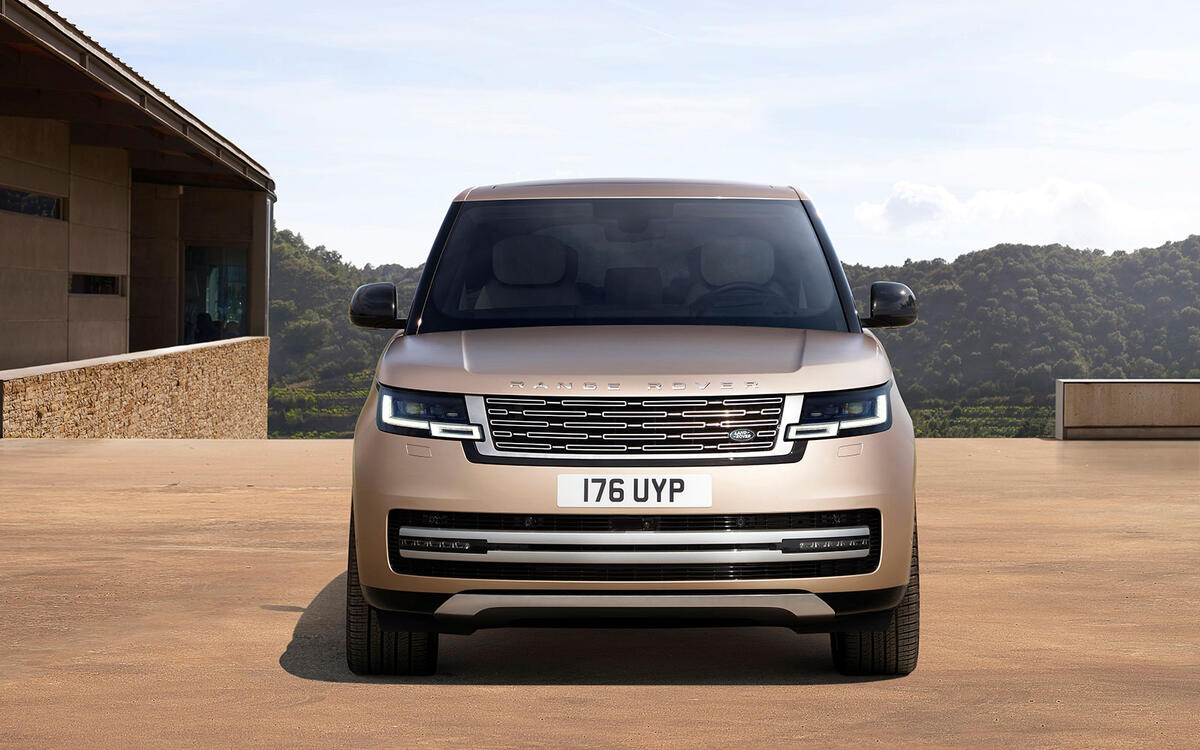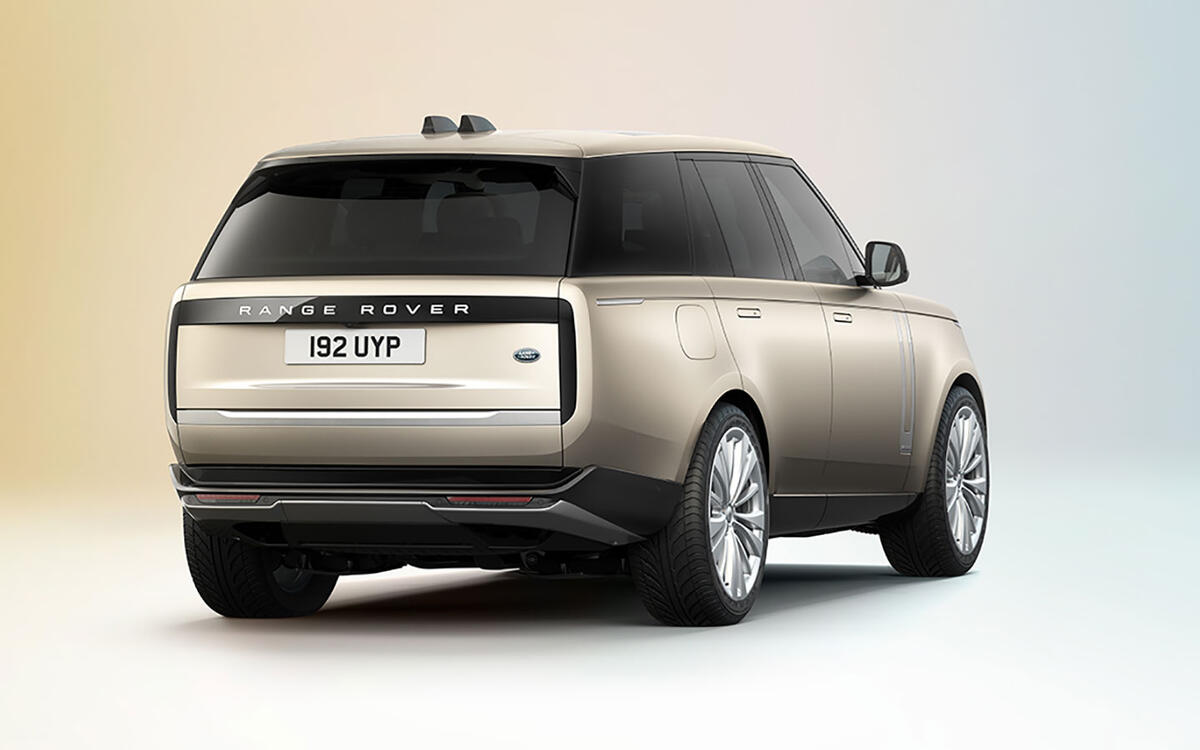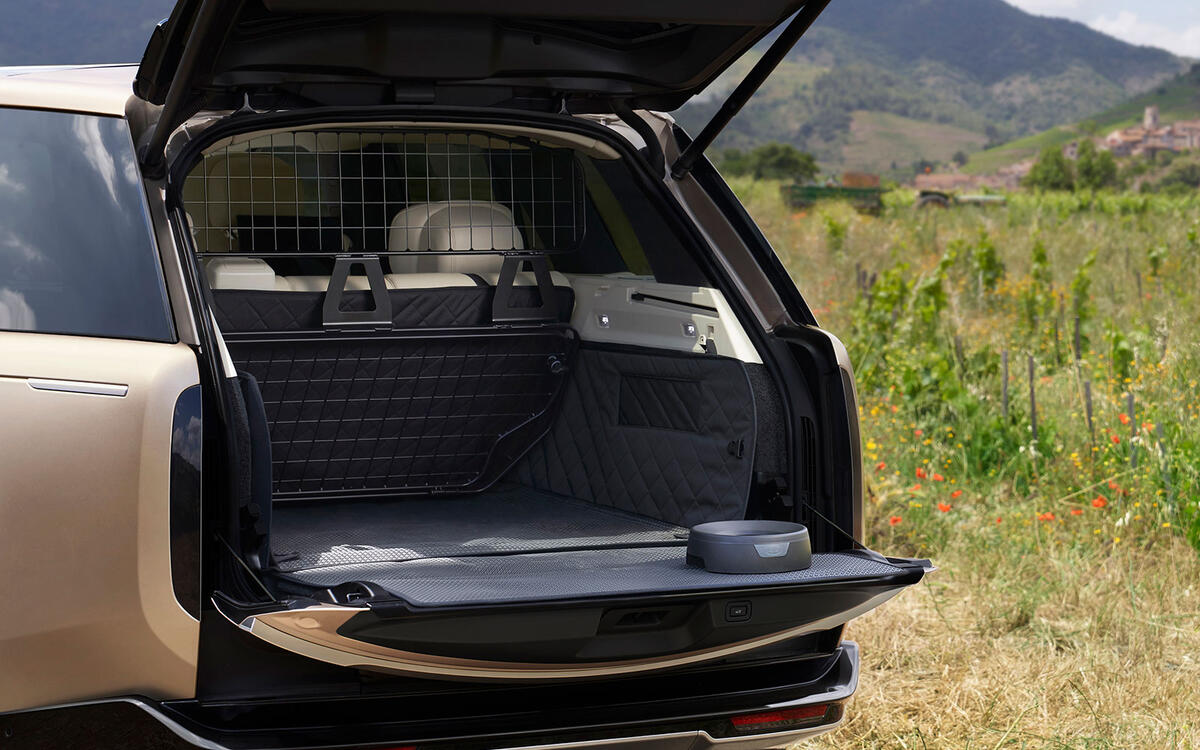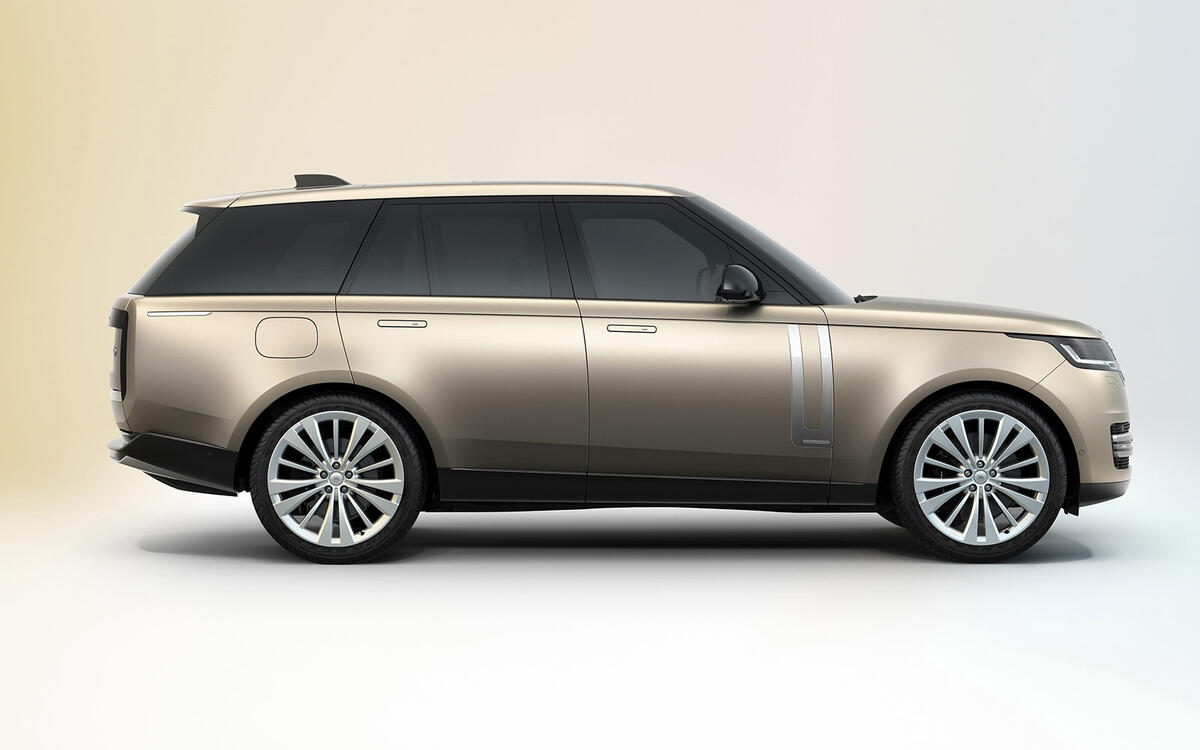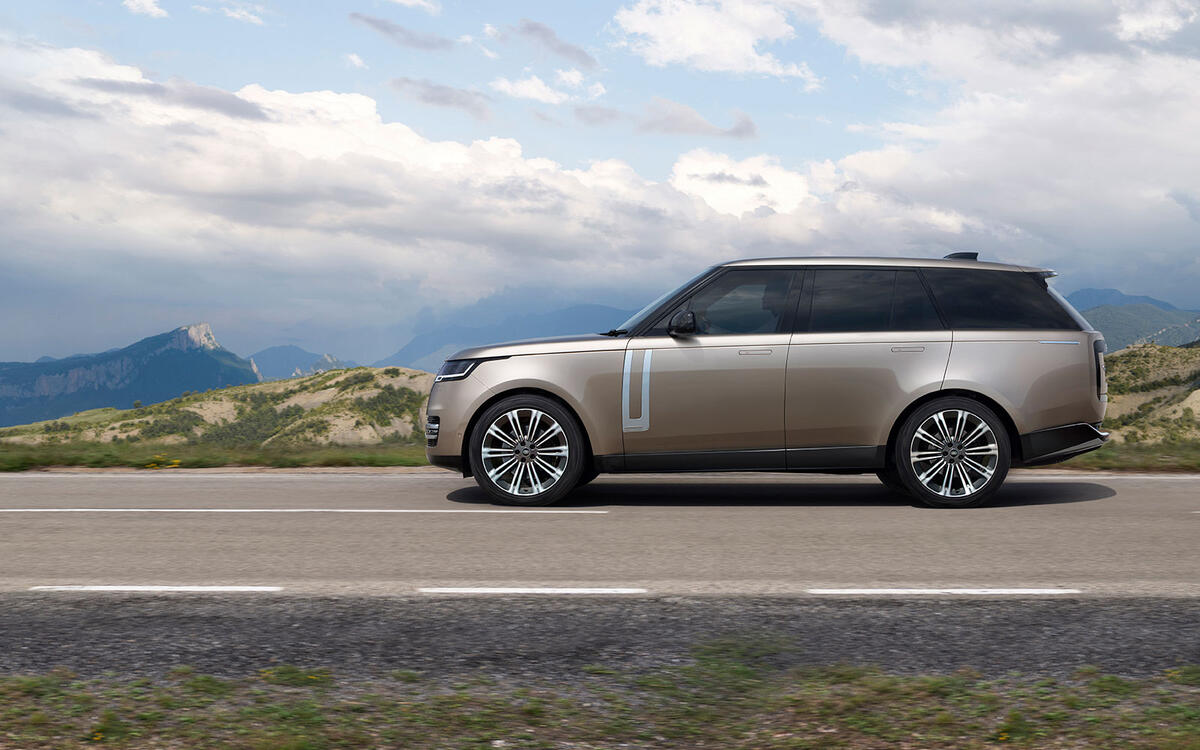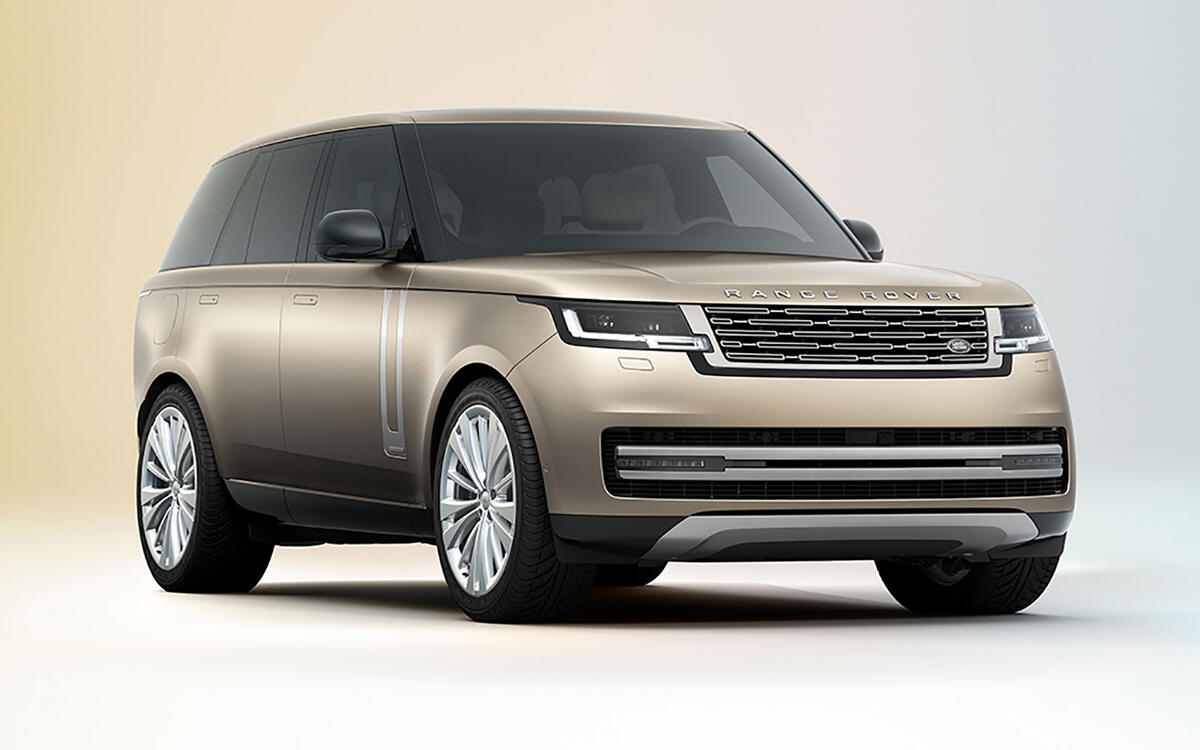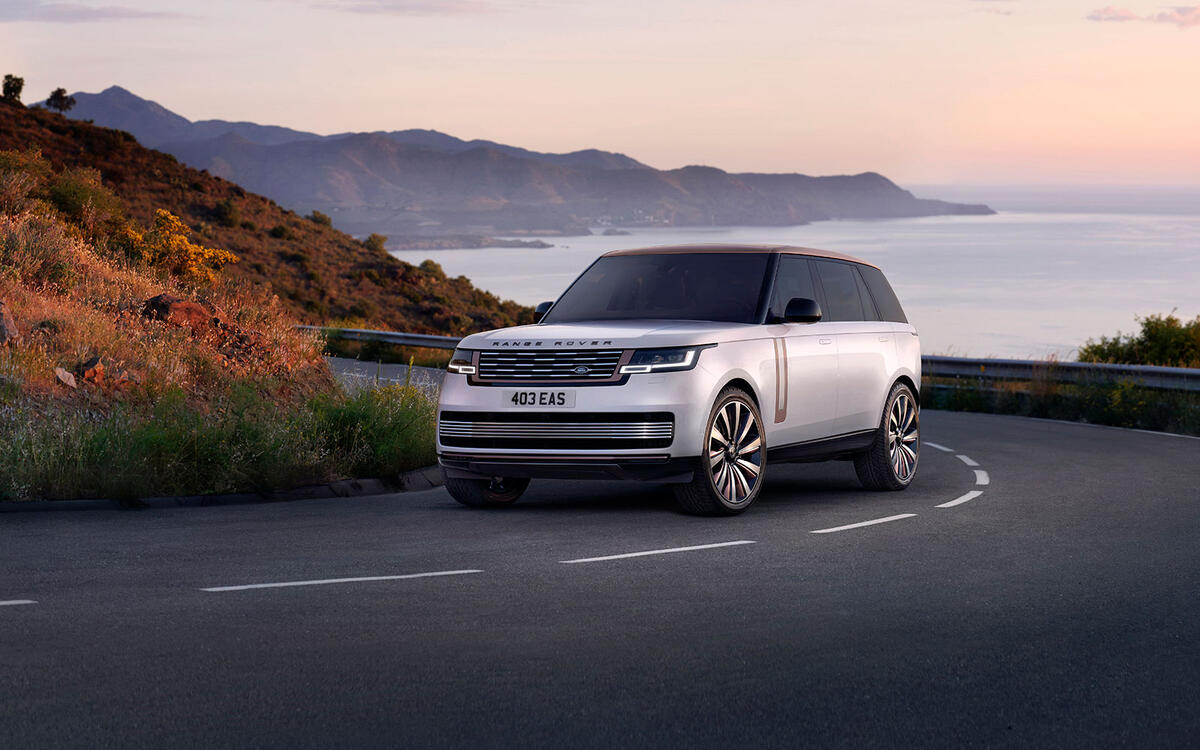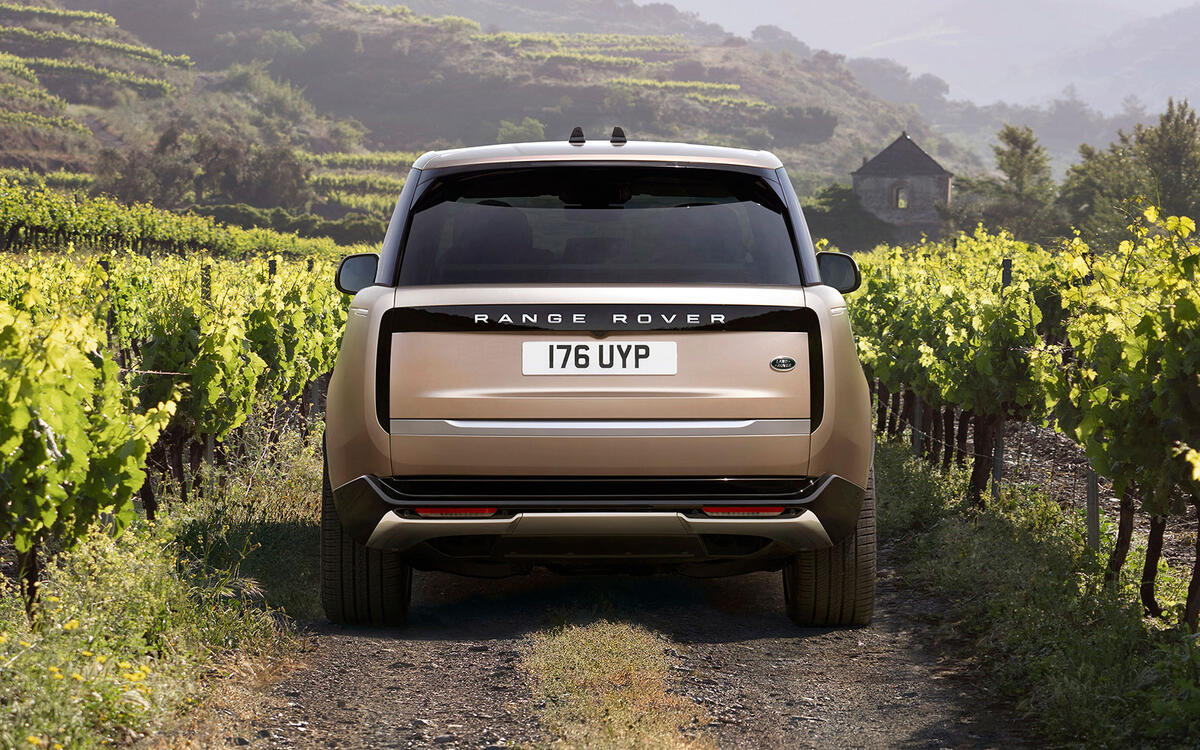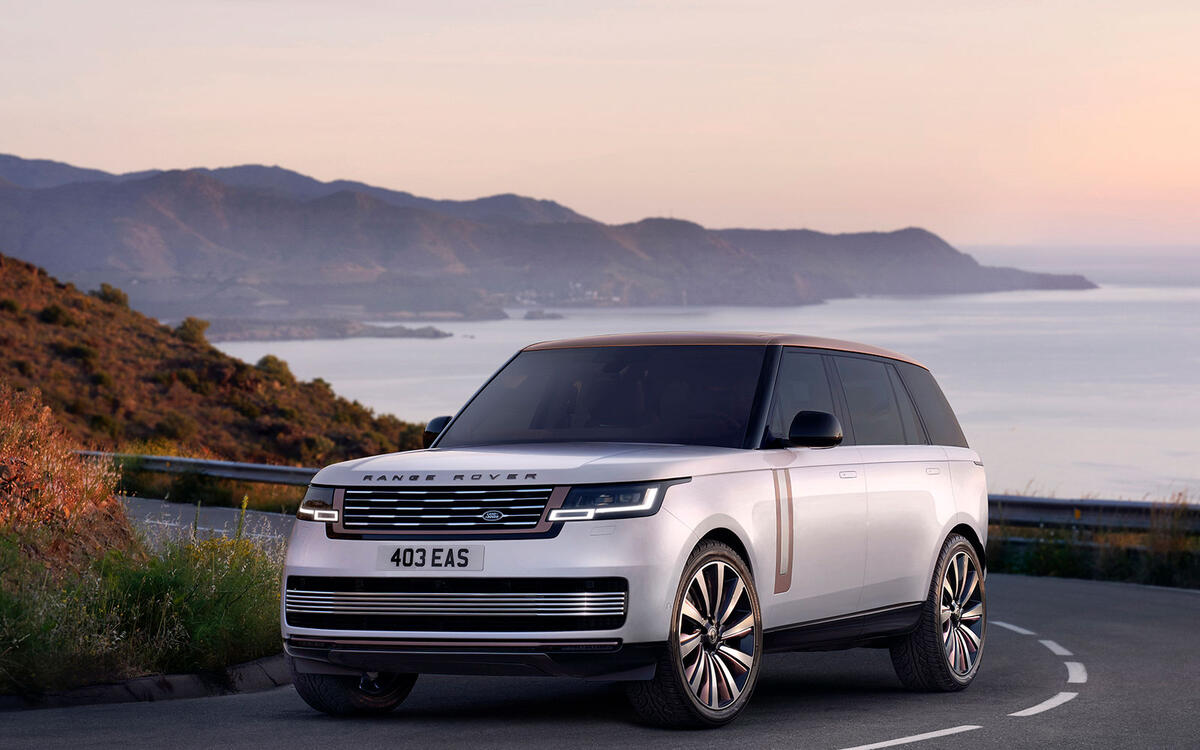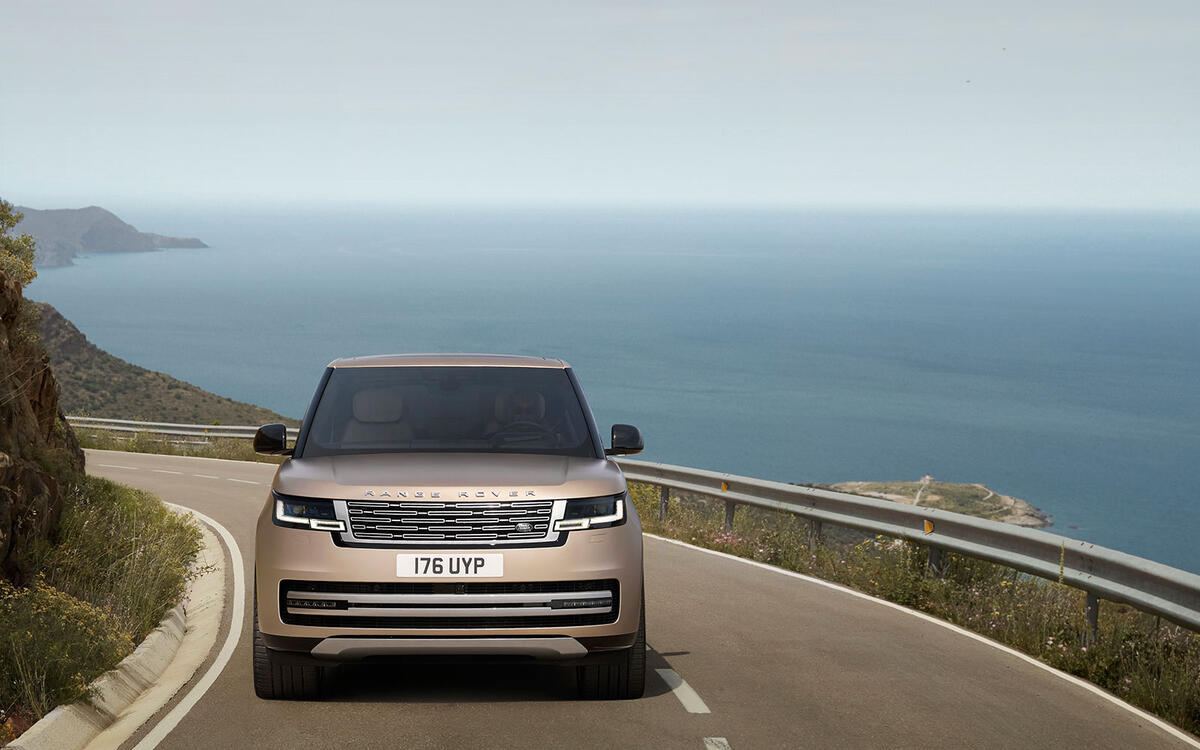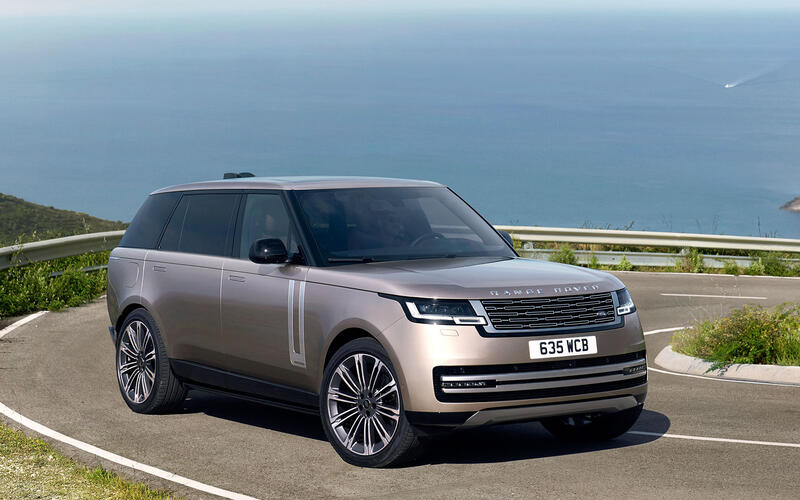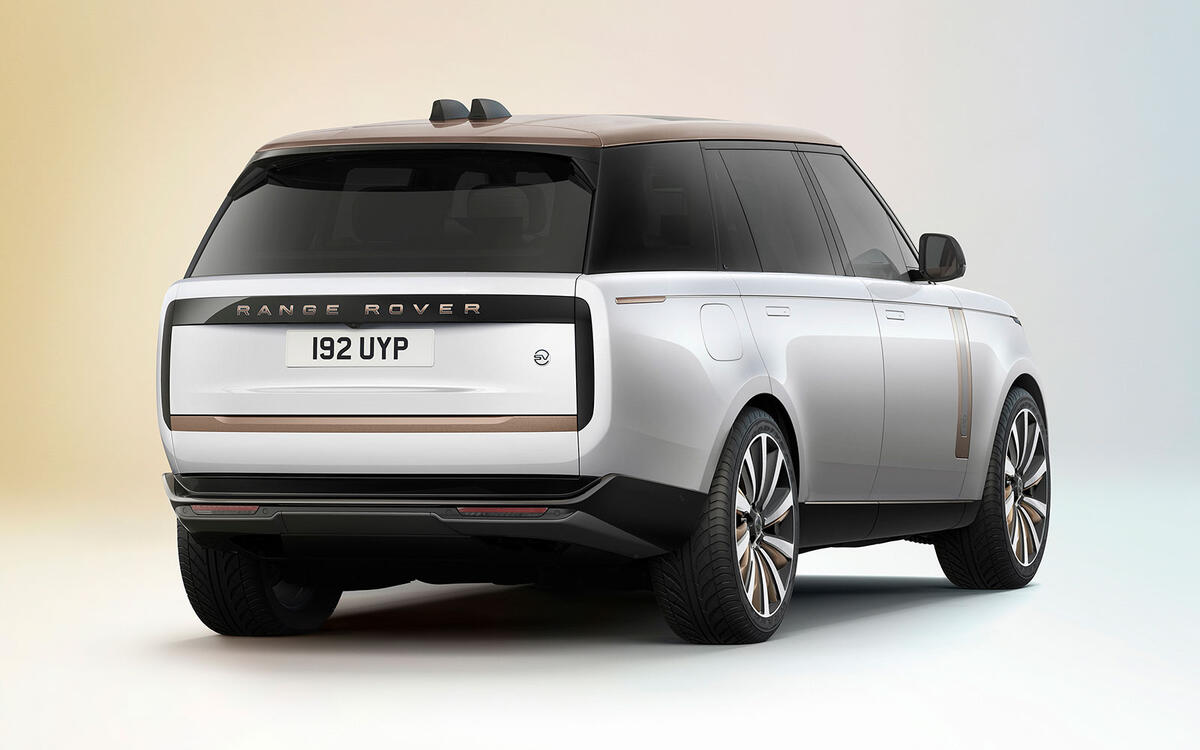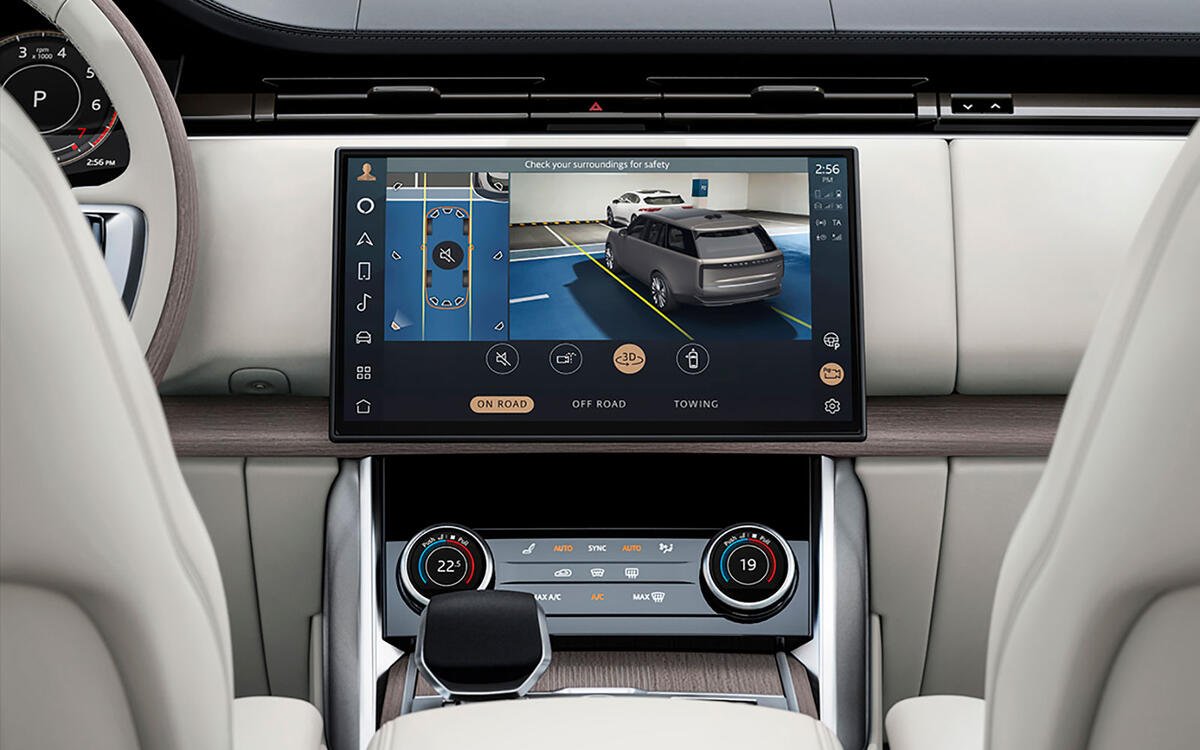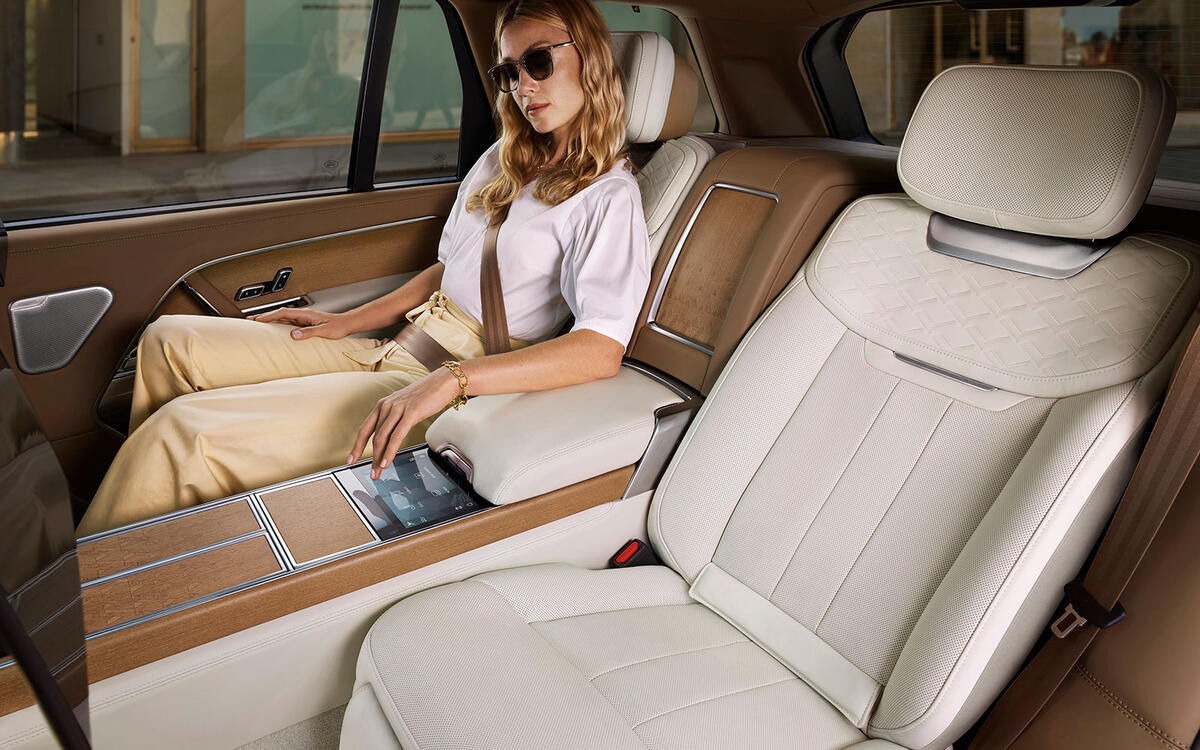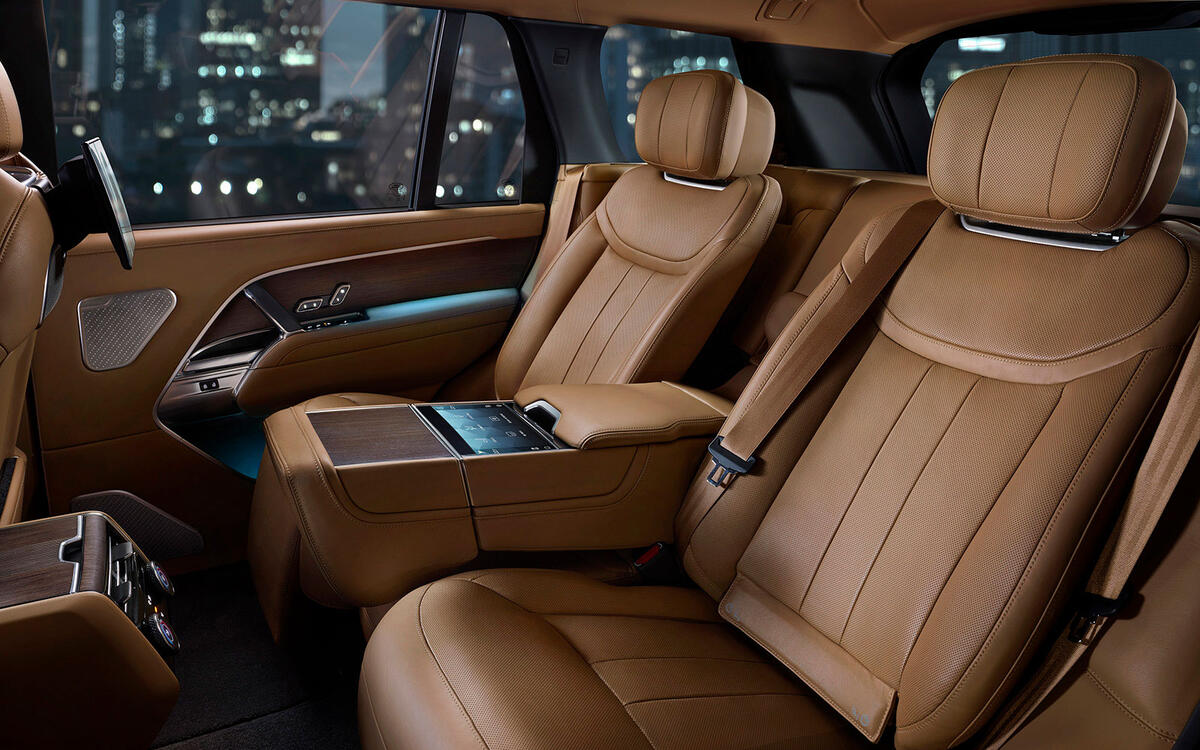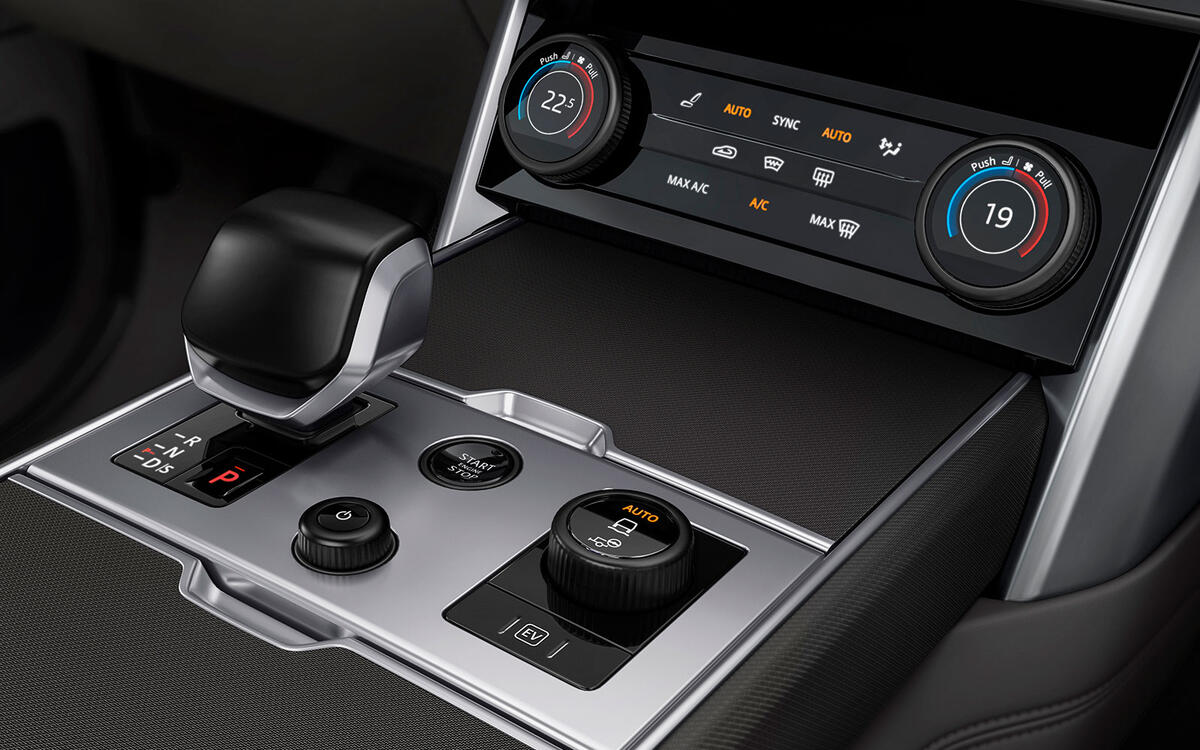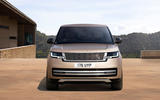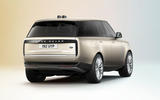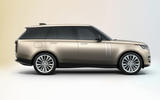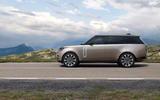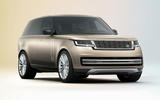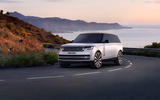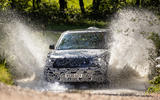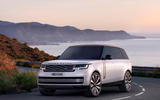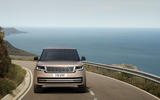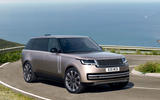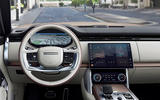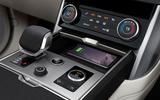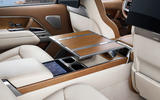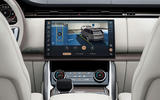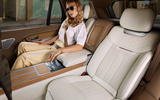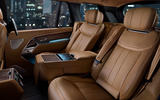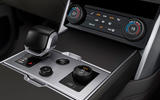 Slide of
Slide of
It's finally here.
Land Rover has unveiled the fifth generation Range Rover, and at the same time ushered in new era for the company. The new flagship model has been completely redesigned and substantially electrified in accordance with the company’s radical plan to slash emissions across its range. Let’s take a close look at the new luxury SUV:
 Slide of
Slide of
Radical
Perhaps the most radical aspect of the new car is that it will be available as a seven-seater for the first time, in the extended wheelbase derivative (pictured on the right). The company reckons the outgoing model lost around five sales a week in America alone due to its lack of those extra seats in that market where families tend to be larger and many rivals feature them.
 Slide of
Slide of
Start at the back
Prices in the UK start at £94,400, with first deliveries in Spring 2022. The Range Rover’s distinctive silhouette remains in place, but there are extensive differences from the outgoing car. The most obvious differentiator is the presence of a large gloss black panel at the back, incorporating vertical brake lights at the side and indicators in a bar across the top, all of which are invisible when not in use.
The tail-lights are said to use the most powerful LEDs in existence, while at the front, each headlight cluster contains some 1.2 million individual mirrors that reflect light from a rear-mounted mirror.
 Slide of
Slide of
Utility
The new rear-end design retains a significant level of functionality and utility. The split-folding tailgate continues to operate as before, with the lower portion folding down and the rear screen raising up. The ‘gill’ motifs and grille of the old car have been redesigned, and the popout door handles first seen on the Velar give a sleeker look. A focus on increased aerodynamic efficiency is also evident in the Range Rover’s new look, and as a result the new car has a drag coefficient of as little as 0.30, which represents a 12% improvement.
 Slide of
Slide of
Platform
The new car is built on Jaguar Land Rover’s new MLA ‘Flex’ architecture, promising 50% more torsional stiffness and 24% less structure-borne noise than on the old car, chiefly through the use of mixed metals and a set of ‘rings’ built into the body shell for maximum rigidity. The structure is made up of 80% aluminium but with extensive use of steel in key areas for improved crash protection and sound deadening.
 Slide of
Slide of
Quietness
The new platform allows the fifth-generation Range Rover to be offered with both internal combustion and electric powertrains. This flexibility highlighted the need for improved rolling refinement: the electric and plug-in hybrid Range Rovers must be as quiet on the move as the combustion-engined models even without the background sound of an engine to offset intrusive road or wind noise. The enhanced stiffness has been achieved even with a full-length, and standard, panoramic sunroof.
 Slide of
Slide of
Engines
There has been a shake-up of the Range Rover’s powertrain offering: there are now no four cylinder options, the plug-in hybrids use a completely new powertrain with significantly improved performance and the top-rung model swaps the old model’s Ford-built supercharged 5.0-litre V8 for a twin-turbo BMW unit.
 Slide of
Slide of
Engine range
The range opens with a choice of 3.0-litre Ingenium straight sixes (two petrol, three diesel), all with 48V mild-hybrid assistance and power outputs ranging from 246bhp in the entry-level D250 diesel to 395bhp in the P400 petrol. Around three months after launch, these will be joined by a petrol-electric plug-in hybrid option with a new 38.2kWh battery that has a WLTP certified electric range of 62 miles, giving the Range Rover one of the longest electric ranges of any PHEV on sale.
 Slide of
Slide of
Hybrid
The new ‘Extended Range’ PHEV variant, based on a six-cylinder engine for the first time, offers combined outputs of either 434bhp and 457lb ft or 503bhp and 516lb ft, and is estimated to be capable of covering 75% of all journeys with the engine off, according to Land Rover’s research.
It has a 50kW charging capacity, so an 80% charge can be achieved in less than an hour. The line-up is capped by the performance-oriented 523bhp/553 lb ft V8, which now shares its motor with BMW’s most potent offerings as part of a new powertrain-sharing agreement between the two firms. This engine delivers 0-62mph in just 4.6sec.
 Slide of
Slide of
Chassis
The new Range Rover’s suspension and steering have been completely overhauled, and despite dramatic boosts in on-road refinement, Land Rover is adamant that its flagship remains as capable off road as it is on it. A dedicated Wading mode allows it to drive through water up to 900mm deep (matching the much more rugged Defender), it has departure and approach angles of 29deg and 34.7deg respectively and it can drive at angles of up to 45deg.
 Slide of
Slide of
Anti-roll
Ground clearance of 295mm can be raised a further145mm in the highest ofthe model’s four suspension settings. On Tarmac, a 48V-powered anti-roll system with 1033lb ft (50% more than the torquiest system currently on the market) prevents excessive body roll under hard cornering. Standard all-wheel steering turns the rear wheels by up to seven degrees in the opposite direction to the fronts at low speeds, reducing the turning circle to as little as 10.95m, roughly the same as a Volkswagen Golf.
 Slide of
Slide of
Four-wheel steering
At higher speeds, the rear wheels turn in the same direction as the fronts for improved stability and faster responses. For the first time, the Range Rover comes equipped with a five-link rear axle, which allows for greater adjustability, while twin-valve Bilstein dampers, which can react to bumps within five milliseconds, offer fully adjustable rebound and compression settings.
 Slide of
Slide of
Cruise
The vehicle automatically lowers by 16mm at cruising speed for improved aerodynamics, which Land Rover says boosts efficiency by as much as 2%. The functionality of the Range Rover’s air suspension has been significantly upgraded, with a new ‘Integrated Chassis Control’ system. This uses navigation data to predict bumps and imperfections in the road ahead at distances of up to 1.9 miles and prepare the suspension to react accordingly. It can also mitigate weight transfer and body movements when accelerating or braking and prepare the car for emergency manoeuvres.
 Slide of
Slide of
Inside
Inside, a series of tech and material upgrades aim to keep the Range Rover in contention for luxury SUV supremacy. A new13.1in infotainment screen, which appears to float above the surface of the dashboard, hosts most of the primary controls and functions. It runs the latest generation of Land Rover’s Pivi Pro operating system.
 Slide of
Slide of
Functions
It uses a customisable three-tab home screen giving access to 90% of functions in as little as two presses, and haptic feedback is now standard across the range. Over-the-air updates can be carried out away from the dealership, and it has its own battery so can be used immediately on entry to the car before the engine is started. Wireless smartphone mirroring and Amazon Alexa speech recognition are included on all models.
 Slide of
Slide of
Range Rover SV
The top-level Range Rover SV (pictured), developed by Land Rover’s in-house Special Vehicle Operations division, has been revealed alongside the standard car but will arrive on sale around three months later. With heightened levels of personalisation, the SV replaces the old car’s range topping SVAutobiography trim and is offered with a choice of four or five ‘executive class’ seats in both standard and long-wheelbase forms.
 Slide of
Slide of
SV - Rear
In the rear of the four-seat car is a centrally mounted table that rises out of the centre console and can be folded and swivelled to suit either rear passenger. The dual rear touchscreens are also upgraded, to 13.1in. In place of a central seat, the SV continues to offer a champagne fridge, which cools items more quickly and takes up less space than before.
 Slide of
Slide of
Design details
BIRD’S-EYE VIEW: Stadium-style arrangement in the seven seater means rearmost passengers sit 41mm higher than the driver for improved visibility. EASE OF OPENING: Electrically assisted doors can open in three seconds, with ultrasonic sensors detecting any obstacles within their sweep.
 Slide of
Slide of
CLEAN AIR ACT:
New cabin purifying function uses ‘dual nanoe’ technology to fight odours, viruses and bacteria. Land Rover says the system is 99% effective against Covid-19.
 Slide of
Slide of
NO ANNOYING NOISE:
Noise-cancelling speakers in the headrests monitor road noise, wheel vibrations and engine sound, reacting with a signal of equal strength.
 Slide of
Slide of
EASY REAR ACCESS:
Electrically operated second-row seats fold forward in just eight seconds to provide walkthrough access to the full-sized third-row seats.
DEVICE INTEGRATION: Integrated wi-fi provides simultaneous internet access for up to eight devices, which can be plugged into any of the 14 power and data points.
Fifth-generation Range Rover arrives to tackle recent new competitors in the luxury SUV class
Advertisement


